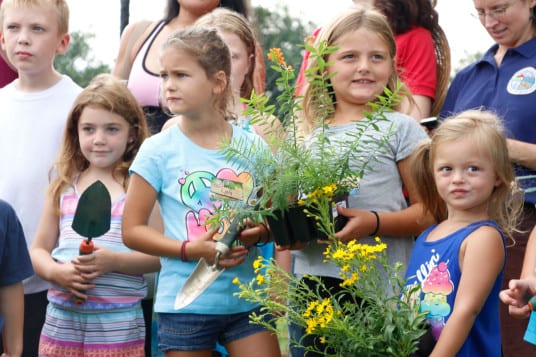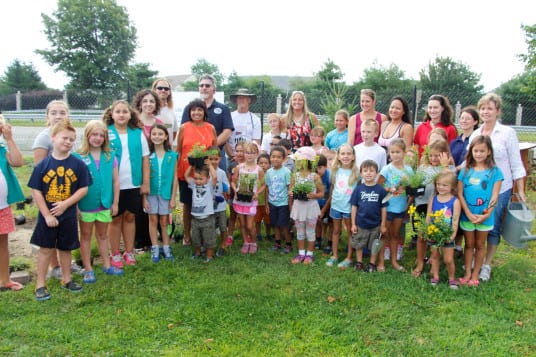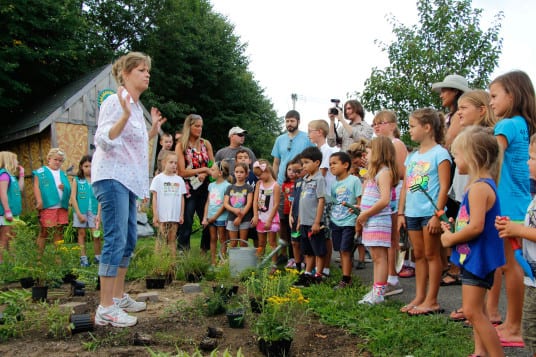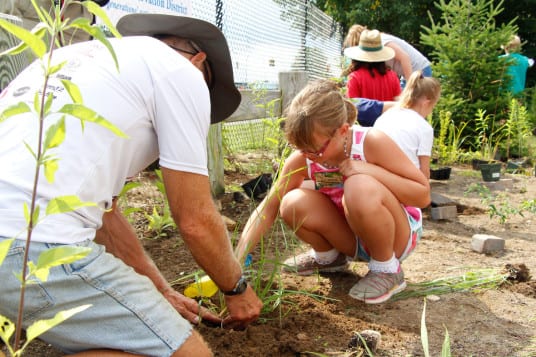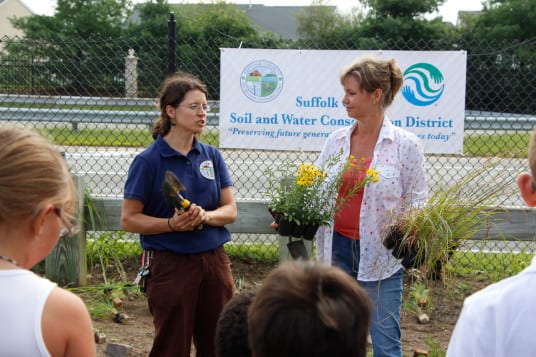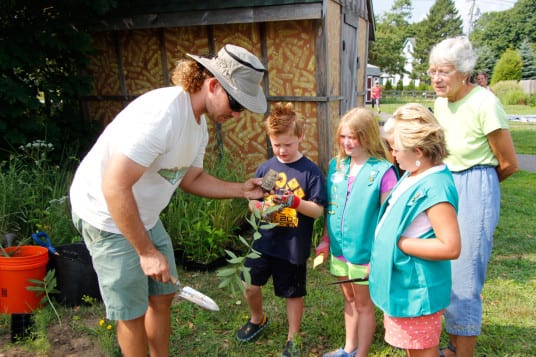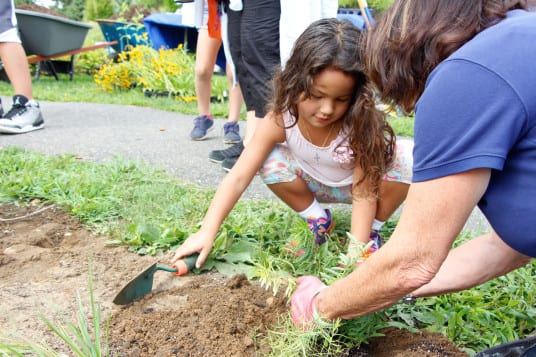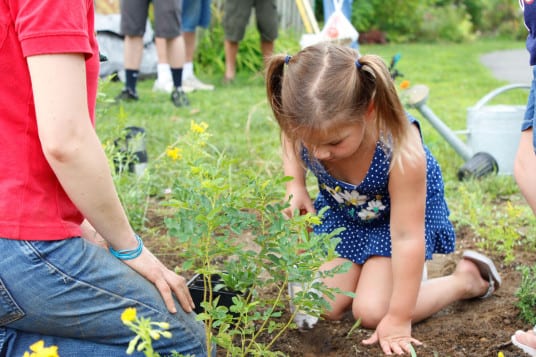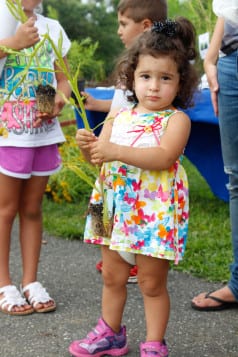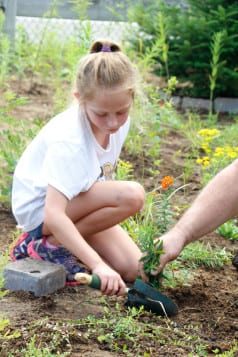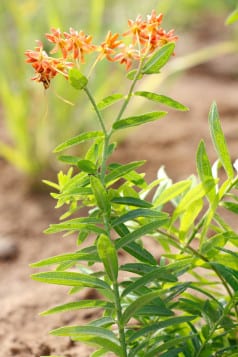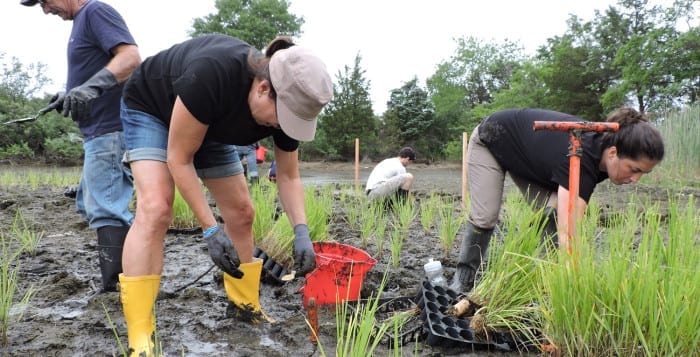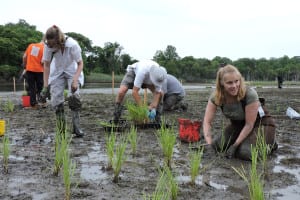The Girl Scouts of Suffolk County and the Little Scientists club joined county Legislator Sarah Anker (D-Mount Sinai), Heritage Trust, the Long Island Native Plant Initiative and members of the Cornell University Cooperative Extension to plant local native species in Anker’s Educational Agriculture Support Initiative pilot garden Tuesday at Heritage Park in Mount Sinai.
The Girl Scouts, alongside their younger counterparts from the Little Scientists club, got down in the dirt and planted several native plants, including various types of milkweed which attract monarch butterflies and other native pollinators to the area.
According to the National Wildlife Federation, monarch butterflies and other native pollinators to Long Island have decreased in numbers by more than 80 percent in the past two decades. Native bee populations are also on the decline. With this decline in native pollinators, Anker hopes to educate people about the importance of native plants and pollinators in the environment.
But before members of the LINPI and Cornell Cooperative Extension helped the Girl Scouts and Little Scientists plant flowers and plants in the pilot garden, Anker gathered the children and tested their knowledge on the importance of native plants and pollinators.
Michelle Skoblicki created the Little Scientists club four years ago. The program caters to children from pre-K to fifth grade, and its goal, according to Skoblicki, is to provide these kids with a means to expand their knowledge about science through hands-on activities, literature and art.
Skoblicki recently taught the kids about life cycles using butterflies, and hopes to release the butterflies they raised in the pilot garden by the end of the week.
“We were hoping to have them ready for the garden but they were still in their chrysalises,” Skoblicki said.
Members of the Girl Scouts also helped plant native plants in the garden; and Maris Lynch, who is involved in her third event as a Girl Scout, was simply happy to help.
The launch was the first event for Girl Scouts Analynn Bisiani and Lindsey Galligan. Bisiani said she was happy to participate and was having fun.
“I would definitely do this again,” Bisiani said.
Galligan was one of several kids who grasped Anker’s message.
“Plant are … a very important part of our community,” Galligan said. “They help insects which help us — and that’s that.”
Anker was excited for the launch and hopes to continue spreading the word about the importance of pollinators and the native plants they need.
“When your kids, when your grandkids or great grandkids are here at the park, I want them to experience everything that I’m experiencing now,” the county legislator said. “If we don’t do something now, we’ll loose this forever.”

